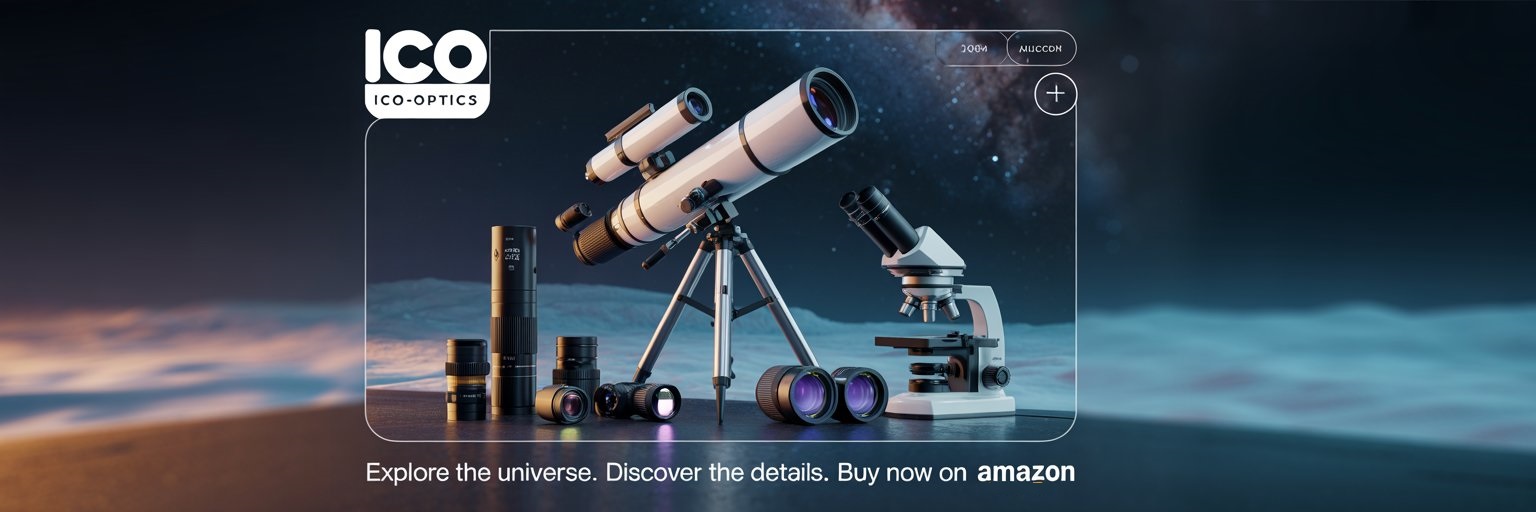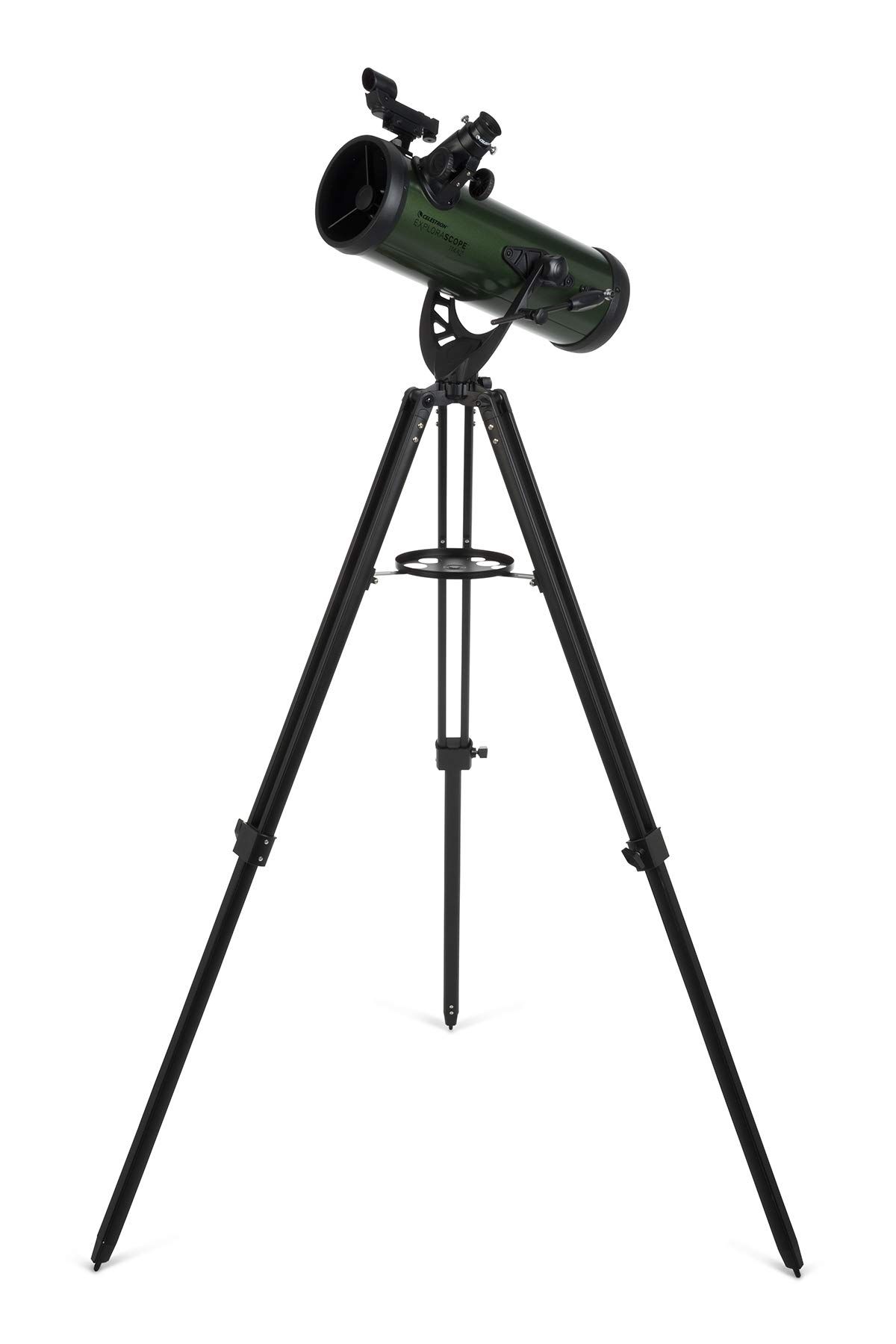Looking for a beginner-friendly telescope that won’t empty your wallet? The ExploraScope 114AZ could be just what you need to kick off your stargazing journey.
This lightweight scope comes in at only 6.7 pounds, and you can set it up in just a few minutes—no tools, no fuss. With a 114mm reflector design, you’ll get nice views of planets, the moon, and some bright deep space stuff like the Orion Nebula.
You’ll find two eyepieces and a 3x Barlow lens in the box, which means you can push magnification up to 750x. Honestly, though, the highest settings make images look pretty dim and shaky—so don’t expect miracles there.
The manual alt-azimuth mount, with its slow motion controls, lets you track objects in the sky smoothly and with little frustration.
Overview of the Celestron ExploraScope 114AZ Refractor Telescope
This entry-level telescope offers solid performance for anyone curious about space but not ready to spend a fortune. The 114mm aperture gathers enough light to show you moon craters, Saturn’s rings, and Jupiter’s moons with surprising clarity.
You can set it up in a matter of minutes—no tools needed. At just 6.7 pounds, it’s easy to carry outside for a quick look at the sky. Celestron includes everything you need to get started: two eyepieces, a 3x Barlow lens, and a red dot finderscope.
Key Features:
- Manual alt-azimuth mount with slow-motion controls
- 20mm and 4mm eyepieces included
- Magnification from 150x to 750x with the Barlow
- Adjustable tripod with accessory tray
You’ll get the best results with bright objects like the moon and planets. Some folks have trouble with faint deep-sky targets, which isn’t surprising for a scope this size. The manual tracking means you’ll need to nudge the telescope as things drift across the sky.
Fully Coated 114mm Newtonian Optics
The optical system is really the heart of this telescope. Celestron uses a 114mm primary mirror that grabs light and reflects it to give you crisp images of faraway objects.
Fully coated optics cut down on light loss and bump up image brightness. Thanks to this, you’ll spot sharper detail when you’re checking out the moon’s craters or Jupiter’s bands.
The 24-inch optical tube keeps the whole thing compact, but still offers decent light-gathering power for its size.
Of course, a 114mm aperture does have its limits. Distant galaxies and faint nebulae come out dimmer than they would in a bigger scope. Bright planets and lunar features are really where this one shines.
With the Newtonian design, you look through the eyepiece at the side of the tube. It’s a little awkward at first, but you get used to it pretty quickly.
Manual Alt-Azimuth Mount With Smooth Tracking
Navigating the night sky feels pretty straightforward with this manual alt-azimuth mount. The ExploraScope 114AZ has a panning handle, so you can swing the telescope up, down, left, or right—no confusing controls.
You can tweak the clutch mechanism to get just the right amount of resistance, making it easy to move but steady enough to hold your target. No more jerky motions that make you lose track of what you’re looking at.
Mount highlights:
- Simple up/down, left/right movement
- Clutch control for smooth pointing
- No motors or electronics to mess with
- Quick tripod setup
The slow-motion rod adds a nice touch of precision, especially when you need to nudge a planet or star back into view.
Wide Range of Included Accessories
Getting into astronomy is way easier when you’ve got the right gear from the start. Celestron packs in a few handy extras with the ExploraScope 114AZ.
You’ll get two eyepieces: the 20mm for lower magnification and the 4mm for when you want to zoom in on details.
The 3x Barlow lens multiplies the power of any eyepiece. With just these two eyepieces and the Barlow, you actually end up with six magnification options.
A finderscope makes it much easier to line up on objects before you look through the main scope. No more guessing and hoping you’re pointed at the right spot.
The accessory tray on the tripod keeps your eyepieces and tools handy, so you’re not fumbling around in the dark.
Lightweight Design for Portability
Moving a telescope can be a pain with many models, but the ExploraScope 114AZ keeps things simple with its compact build.
Why it’s easy to carry:
- Whole kit weighs just 6.7 pounds
- Sets up in minutes, no tools needed
- Grab-and-go for impromptu skywatching
This lightweight design makes it great for camping or hopping between backyard spots. You won’t break a sweat hauling it around.
Of course, lighter scopes can feel a bit less stable if the wind picks up, but for most casual users, the portability is totally worth it.
No-tool setup means you’re not wasting time. Just assemble and start watching the sky—handy if you want to catch a quick meteor shower or lunar eclipse.
Starry Night Software Experience
Learning the night sky gets a lot easier with the included software. Celestron gives you access to their astronomy program, which helps you figure out what’s overhead and when.
Software perks:
- Interactive sky maps and star charts
- Shows you what’s visible each night
- Tools for planning your sessions
- Lots of educational content
Most folks find the software super helpful for planning what to look at. It tells you what’s up there and when it’ll be best to see.
If you’re new to all this, the software helps you make sense of what you’re seeing. Some users say it feels a bit overwhelming at first, but you’ll get the hang of it after poking around.
Set Up and Ease of Use
Setting up the ExploraScope is quick and painless. You don’t need any tools, so even if you’ve never assembled a telescope, you’ll be up and running in no time.
The lightweight design (just 6.7 pounds) means you won’t be lugging heavy parts around, which is a relief.
You move the scope around with a panning handle on the manual alt-azimuth mount. Clutch controls let you track objects smoothly. Some folks say the slow-motion controls take a little practice, but it’s not a huge hurdle.
The adjustable tripod has an accessory tray for your eyepieces and Barlow lens. Beginners sometimes move too fast when focusing, but you’ll get the feel for it pretty quickly.
Setup highlights:
- No-tool assembly
- Fast setup
- Only 6.7 pounds
- Smooth clutch controls
- Adjustable tripod with accessory tray
Pros and Cons
If you’re weighing whether this telescope is worth it, here’s a quick rundown of the good and the not-so-good.
Pros
The ExploraScope 114AZ gives beginners a solid way to start exploring the sky. The 114mm aperture pulls in enough light to see Saturn’s rings and Jupiter’s moons without much trouble.
Setup is a breeze. You won’t need any tools, and most people have it ready in minutes. The tripod feels solid and doesn’t wobble around.
The slow-motion control rod helps you keep objects in view as the Earth rotates, which is a nice touch for tracking planets and stars.
Accessories are included. Two eyepieces (20mm and 4mm), a 3x Barlow lens, and a finderscope come in the box, so you can try out different magnifications right away.
The price is right for first-time buyers. You get decent optics without spending a ton.
Cons
The learning curve can be a bit steep if you’re totally new to telescopes. Some people struggle with focusing at first since the controls are more sensitive than you’d expect.
Build quality isn’t perfect. Occasionally, buyers get missing parts or something arrives damaged.
Aligning the finderscope can test your patience. Until you get it right, finding objects in the sky might be a little frustrating.
Performance has its limits. You’ll see the moon and major planets well, but faint deep-sky objects are tough to spot. This scope really shines with bright targets.
The mount, while stable enough, doesn’t have the fine precision that more advanced users might want.
Ready to dive in? Check out the Celestron ExploraScope 114AZ on Amazon to see current pricing and availability.
Customer Reviews
Real buyers have a lot to say—mostly good things—about this beginner-friendly telescope. Plenty of first-timers mention how surprised they are by the clear views of the moon’s craters and surface details.
What customers love:
- Planetary viewing: People spot Saturn’s rings and Jupiter’s moons, which is always a thrill
- Sturdy build: The tripod and mount feel stable and get frequent shoutouts
- Beginner-friendly: Even 9-year-olds put it together with just a bit of adult help
- Moon observation: New astronomers can’t help but rave about the sharp, detailed full moon views
Common challenges:
- Learning curve: Some folks run into trouble with setup and focusing at first
- Mixed star viewing: Deep-sky objects are hit or miss, especially compared to planets
- Missing parts: A handful of people end up with incomplete packages
The ExploraScope holds a 4.2-star rating from 132 reviews. Most buyers say it’s a solid starter telescope, especially if you want to check out the moon or planets.
Curious about what’s out there? Check out the Celestron ExploraScope 114AZ on Amazon to see the latest price and availability.
Conclusion
So, after digging into the details, I think the ExploraScope gives beginners a pretty solid bang for their buck. You’ll catch some sharp views of the moon’s craters, Saturn’s rings, and Jupiter’s moons thanks to its 4.5-inch aperture. The tripod feels sturdy, and the alt-az mount makes tracking objects way easier than those flimsy setups you sometimes see.
Still, you might run into a few hiccups. Those slow-motion controls? They can feel awkward at first, honestly. I’ve seen folks need a little patience to nail the focusing system without overshooting.
This telescope really shines if you’re patient and up for a little learning curve. People who slow down and take their time with setup and focusing seem to get way better results than the ones who rush it. The red-dot finder scope actually helps a lot once you figure out how it works.
For the price, you’re getting a capable instrument that’ll keep up as you get more into astronomy. Just be ready for a bit of trial and error as you build your skills.
Check out the Celestron ExploraScope 114AZ on Amazon to see current pricing and availability.


